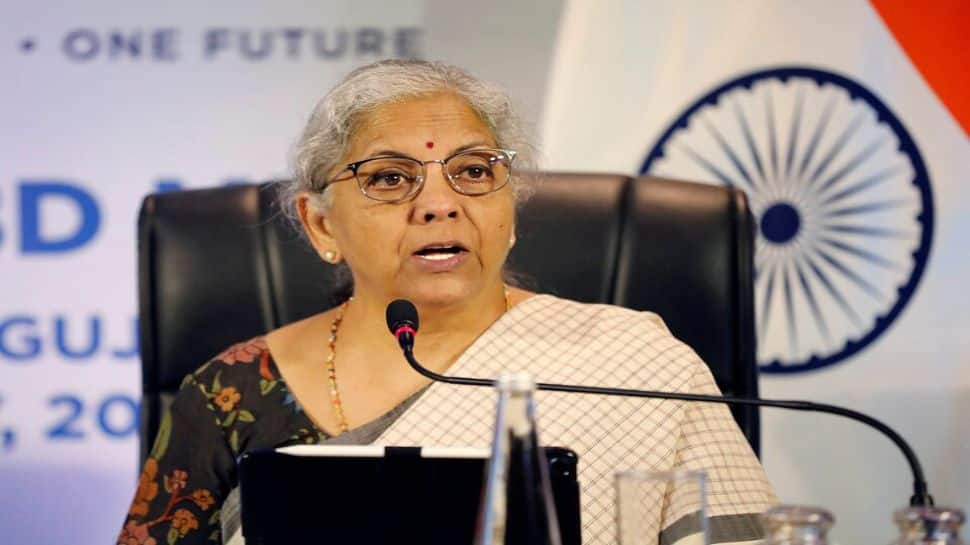Business
What wealthy parents need to know about giving real estate to their kids

A local house with a porch in Edgartown on Martha’s Vineyard, Massachusetts, USA.
Wolfgang Kaehler | Lightrocket | Getty Images
A version of this article first appeared in CNBC’s Inside Wealth newsletter with Robert Frank, a weekly guide to the high-net-worth investor and consumer. Sign up to receive future editions, straight to your inbox.
The great wealth transfer is leading to a great real estate transfer, with up to $25 trillion in real estate owned by older generations that could get passed down — and fought over — in their families.
According to Cerulli Associates, $105 trillion is expected to be passed down by baby boomers and older generations by 2048. Real estate, including primary and vacation homes, as well as investment properties, is expected to be a large component. The silent generation and baby boomers own nearly $25 trillion in real estate combined, according to the Federal Reserve.
Yet with property comes conflict. Wealth advisors say handing down real estate is increasingly filled with both financial and emotional pitfalls for families, ranging from taxes and maintenance costs to disputes over ownership and usage. The straightforward solution is just to sell it and divide the proceeds.
“Some people want to retain the house and other children don’t,” said BNY Wealth’s Jere Doyle. “I can tell you, as a practical matter, there’s going to be fights. There’s going to be disagreements. You’re not going to have the perfect situation.”
But lawyers and wealth planners say there are measures families can take to more effectively pass down real estate to minimize taxes, costs and family battles. Here are five secrets to successful real estate inheritances, whether it’s an apartment on Park Avenue, a beach house on the Vineyard or a ranch in Montana.
1. Transfer real estate in your will or through a trust to avoid a major tax bill.
Passing down vacation homes is the most fraught, said Elisa Rizzo of J.P. Morgan Private Bank. Her clients often downsize their primary residences later in life, but families stay attached to their second homes.
“That vacation home, often for our families that are very mobile, becomes the centering place,” said Rizzo, head of family office advisory at JP Morgan. “The vacation homes are where people go, and they make really special memories with one another, whether it’s a ski house up in Vermont or a vacation home on Nantucket.”
Doyle advises against gifting long-held real estate before you die. If your heirs choose to sell the property, they have to pay capital gains taxes on the property’s appreciation since the parents originally bought the property.
“If you give during your lifetime, the kids take your cost basis,” said Doyle, senior estate planning strategist for BNY Wealth. “One of the things that people have to bear in mind is that the senior generation probably didn’t pay an awful lot for the property.”
There are ways to minimize the tax burden, such as using a qualified personal residence trust. However, if you can afford to wait, it is best to leave real estate to your heirs in your will or in a trust at death, according to Doyle. If the heirs later sell the property, they only have to pay capital gains taxes on how much the home has appreciated since they inherited it.
2. Use LLCs and trusts to shield the home from lawsuits.
Rather than having the heirs own the property directly, lawyers recommend placing homes in a limited liability company and setting up a trust for the kids’ benefit that holds interest in the LLC.
These legal maneuvers protect assets in several ways. For instance, if a vacation home is rented and a tenant slips and falls, the heirs are not held personally liable for any damages.
“Your other assets, stocks, bonds, are not subject to any creditors’ claims,” Doyle said.
It also shields heirs from the liabilities of their siblings, according to Dan Griffith, director of wealth strategy at Huntington Private Bank. For instance, if one heir files for bankruptcy, the LLC structure prevents the creditors from putting a lien on the shared home, he said.
You can also save on transfer taxes by gifting interest in an LLC that owns the property rather than putting heirs’ names on the deed, Griffith said. Since these fractional interests are illiquid, parents can claim a discount on the taxable value.
3. Outline who gets to use the home and how.
Parents can put rules in place with an operating agreement for the LLC. Clients can use the document to make sure the home doesn’t end up in the hands of their children’s spouses, which is a common concern, according to Northern Trust’s Laura Mandel.
“Typically families want to retain these properties along the bloodline,” said the chief fiduciary officer.
Parents can restrict an LLC interest from transferring to surviving or former spouses of their children. With a well-drawn trust, it would be difficult for the spouse to contest it in court, Mandel said. These operating agreements often include buyout provisions that allow the heirs to buy out the spouse.
Parents can also use the document to guide how the property is used, such as laying out how many holiday weekends each child gets, who has the right to redecorate or whether the home can be rented out or used for weddings.
Leaving these issues unaddressed can cause fights among siblings. Mandel recalled a set of four siblings with a large ranch out west that they rented out frequently. After complaints that the ranch felt like a “VRBO,” Mandel helped the siblings reach an agreement on how the property could be used.
4. Set aside liquid assets for the house’s upkeep and insurance.
Money is the most common trigger for family feuds, Griffith said. An inherited home can quickly become a financial burden unless the parents also set aside cash to pay for the upkeep.
“What ends up inevitably happening there is that one person pays the bills, and then enormous resentment grows, because either that person has to ask their siblings or cousins for money and sometimes those people don’t pay,” he said. “Or they say, ‘Hey, I’m the one paying all the bills. How come I don’t get to use this more often than any of the rest of you?'”
Doyle recommends that parents use liquid assets like marketable securities or take out a life insurance policy in order to endow the trust. This outlay makes it possible for siblings to hold onto the home even if they can’t afford to share the expenses.
“In a lot of cases, you may have some kids that can afford to pay the maintenance expenses, and others can’t, so how do you treat them equally?” he said.
However, the operating agreement should still include a contingency plan for dividing expenses if the trust runs dry. This is especially important for waterfront homes that are expensive to insure or susceptible to erosion.
5. Prepare for the likelihood that some heirs may want to cash out.
Parents often assume that their children will want to keep the home, according to Mandel. However, even if heirs initially agree to, they may change their minds later. Perhaps they grow tired of sharing a home with their cousins or a death in the family changes the equation, she said. For instance, Mandel worked with a ranch-owning family where the only sibling with working knowledge of the property passed away unexpectedly, which upended the living siblings’ plan to run the ranch.
It’s important to plan for the likelihood that some or all of the heirs will want to cash out. Doyle suggests creating buyout provisions that allow heirs to buy their siblings’ LLC interest even if they don’t have the liquidity, such as taking out a promissory note. The assets in the trust can also be used to buy siblings’ interests in the LLC.
“What you’ve got to build into any plan is an understanding that people’s circumstances and situations can and will definitely change,” he said. “Maybe they’re going to have kids, or their job changes, or their health changes. Things change.”
This can be hard for parents to reconcile, but keeping heirs’ hands tied defeats the purpose of a vacation home, Griffith said.
“If your grandchildren don’t have any ties to this place, no one lives here, no one grew up here, nobody cares, then do you really care if they sell the place?” he said. “If somebody else who really does care about it gets to enjoy it, is that such a bad thing?”
Business
South Korea: Online retail giant Coupang hit by massive data leak

Osmond ChiaBusiness reporter
 Getty Images
Getty ImagesSouth Korea’s largest online retailer, Coupang, has apologised for a massive data breach potentially involving nearly 34 million local customer accounts.
The country’s internet authority said that it is investigating the breach and that details from the millions of accounts have likely been exposed.
Coupang is often described as South Korea’s equivalent of Amazon.com. The breach marks the latest in a series of data leaks at major firms in the country, including its telecommunications giant, SK Telecom.
Coupang told the BBC it became aware of the unauthorised access of personal data of about 4,500 customer accounts on 18 November and immediately reported it to the authorities.
But later checks found that some 33.7 million customer accounts – all in South Korea – were likely exposed, said Coupang, adding that the breach is believed to have begun as early as June through a server based overseas.
The exposed data is limited to name, email address, phone number, shipping address and some order histories, Coupang said.
No credit card information or login credentials were leaked. Those details remain securely protected and no action is required from Coupang users at this point, the firm added.
The number of accounts affected by the incident represents more than half of South Korea’s roughly-52 million population.
Coupang, which is founded in South Korea and headquartered in the US, said recently that it had nearly 25 million active users.
Coupang apologised to its customers and warned them to stay alert to scams impersonating the company.
The firm did not give details on who is behind the breach.
South Korean media outlets reported on Sunday that a former Coupang employee from China was suspected of being behind the breach.
The authorities are assessing the scale of the breach as well as whether Coupang had broken any data protection safety rules, South Korea’s Ministry of Science and ICT said in a statement.
“As the breach involves the contact details and addresses of a large number of citizens, the Commission plans to conduct a swift investigation and impose strict sanctions if it finds a violation of the duty to implement safety measures under the Protection Act.”
The incident marks the latest in a series of breaches affecting major South Korean companies this year, despite the country’s reputation for stringent data privacy rules.
SK Telecom, South Korea’s largest mobile operator, was fined nearly $100m (£76m) over a data breach involving more than 20 million subscribers.
In September, Lotte Cards also said the data of nearly three million customers was leaked after a cyber-attack on the credit card firm.
Business
Pakistan’s crisis differs from world | The Express Tribune
1729471601-0/image-(8)1729471601-0-640x480.webp)
Multiple elite clusters capture system as each extracts benefits in different ways
Pakistan’s ruling elite reinforces a blind nationalism, promoting the belief that the country does not need to learn from developed or emerging economies, as this serves their interests. PHOTO: FILE
KARACHI:
Elite capture is hardly a unique Pakistani phenomenon. Across developing economies – from Latin America to Sub-Saharan Africa and parts of South Asia – political and economic systems are often influenced, shaped, or quietly commandeered by narrow interest groups.
However, the latest IMF analysis of Pakistan’s political economy highlights a deeper, more entrenched strain of elite capture; one that is broader in composition, more durable in structure, and more corrosive in its fiscal consequences than what is commonly observed elsewhere. This difference matters because it shapes why repeated reform cycles have failed, why tax bases remain narrow, and why the state repeatedly slips back into crisis despite bailouts, stabilisation efforts, and policy resets.
Globally, elite capture typically operates through predictable channels: regulatory manipulation, favourable credit allocation, public-sector appointments, or preferential access to state contracts. In most emerging economies, these practices tend to be dominated by one or two elite blocs; often oligarchic business families or entrenched political networks.
In contrast, Pakistan’s system is not captured by a single group but by multiple competing elite clusters – military, political dynasties, large landholders, protected industrial lobbies, and urban commercial networks; each extracting benefits in different forms. Instead of acting as a unified oligarchic class, these groups engage in a form of competitive extraction, amplifying inefficiencies and leaving the state structurally weak.
The IMF’s identification of this fragmentation is crucial. Unlike countries where the dominant elite at least maintains a degree of policy coherence, such as Vietnam’s party-led model or Turkiye’s centralised political-business nexus, Pakistan’s fragmentation results in incoherent, stop-start economic governance, with every reform initiative caught in the crossfire of competing privileges.
For example, tax exemptions continue to favour both agricultural landholders and protected sectors despite broad consensus on the inefficiencies they generate. Meanwhile, state-owned enterprises continue to drain the budget due to overlapping political and bureaucratic interests that resist restructuring. These dynamics create a fiscal environment where adjustment becomes politically costly and therefore systematically delayed.
Another distinguishing characteristic is the fiscal footprint of elite capture in Pakistan. While elite influence is global, its measurable impact on Pakistan’s budget is unusually pronounced. Regressive tax structures, preferential energy tariffs, subsidised credit lines for favoured industries, and the persistent shielding of large informal commercial segments combine to erode the state’s revenue base.
The result is dependency on external financing and an inability to build buffers. Where other developing economies have expanded domestic taxation after crises, like Indonesia after the Asian financial crisis, Pakistan’s tax-to-GDP ratio has stagnated or deteriorated, repeatedly offset by politically negotiated exemptions.
Moreover, unlike countries where elite capture operates primarily through economic levers, Pakistan’s structure is intensely politico-establishment in design. This tri-layer configuration creates an institutional rigidity that is difficult to unwind. The civil-military imbalance limits parliamentary oversight of fiscal decisions, political fragmentation obstructs legislative reform, and bureaucratic inertia prevents implementation, even when policies are designed effectively.
In many ways, Pakistan’s challenge is not just elite capture; it is elite entanglement, where power is diffused, yet collectively resistant to change. Given these distinctions, the solutions cannot simply mimic generic reform templates applied in other developing economies. Pakistan requires a sequenced, politically aware reform agenda that aligns incentives rather than assuming an unrealistic national consensus.
First, broadening the tax base must be anchored in institutional credibility rather than coercion. The state has historically attempted forced compliance but has not invested in digitalisation, transparent tax administration, and trusted grievance mechanisms. Countries like Rwanda and Georgia demonstrate that tax reforms succeed only when the system is depersonalised and automated. Pakistan’s current reforms must similarly prioritise structural modernisation over episodic revenue drives.
Second, rationalising subsidies and preferential tariffs requires a political bargain that recognises the diversity of elite interests. Phasing out energy subsidies for specific sectors should be accompanied by productivity-linked support, time-bound transition windows, and export-competitiveness incentives. This shifts the debate from entitlement to performance, making reform politically feasible.
Third, Pakistan must reduce its SOE burden through a dual-track programme: commercial restructuring where feasible and privatisation or liquidation where not. Many countries, including Brazil and Malaysia, have stabilised finances by ring-fencing SOE losses. Pakistan needs a professional, autonomous holding company structure like Singapore’s Temasek to depoliticise SOE governance.
Fourth, politico-establishment reform is essential but must be approached through institutional incentives rather than confrontation. The creation of unified economic decision-making forums with transparent minutes, parliamentary reporting, and performance audits can gradually rebalance power. The goal is not confrontation, but alignment of national economic priorities with institutional roles.
Finally, political stability is the foundational prerequisite. Long-term reform cannot coexist with cyclical political resets. Countries that broke elite capture, such as South Korea in the 1960s or Indonesia in the 2000s, did so through sustained, multi-year policy continuity.
What differentiates Pakistan is not the existence of elite capture but its multi-polar, deeply institutionalised, fiscally destructive form. Yet this does not make reform impossible. It simply means the solutions must reflect the structural specificity of Pakistan’s governance. Undoing entrenched capture requires neither revolutionary rhetoric nor unrealistic expectations but a deliberate recalibration of incentives, institutions, and political alignments. Only through such a pragmatic approach can Pakistan shift from chronic crisis management to genuine economic renewal.
The writer is a financial market enthusiast and is associated with Pakistan’s stocks, commodities and emerging technology
Business
India’s $5 Trillion Economy Push Explained: Why Modi Govt Wants To Merge 12 Banks Into 4 Mega ‘World-Class’ Lending Giants

India’s Public Sector Banks Merger: The Centre is mulling over consolidating public-sector banks, and officials involved in the process say the long-term plan could eventually bring down the number of state-owned lenders from 12 to possibly just 4. The goal is to build a banking system that is large enough in scale, has deeper capital strength and is prepared to meet the credit needs of a fast-growing economy.
The minister explained that bigger banks are better equipped to support large-scale lending and long-term projects. “The country’s economy is moving rapidly toward the $5 trillion mark. The government is active in building bigger banks that can meet rising requirements,” she said.
Why India Wants Larger Banks
Sitharaman recently confirmed that the government and the Reserve Bank of India have already begun detailed conversations on another round of mergers. She said the focus is on creating “world-class” banks that can support India’s expanding industries, rising infrastructure investments and overall credit demand.
She clarified that this is not only about merging institutions. The government and RBI are working on strengthening the entire banking ecosystem so that banks grow naturally and operate in a stable environment.
According to her, the core aim is to build stronger, more efficient and globally competitive banks that can help sustain India’s growth momentum.
At present, the country has a total of 12 public sector banks: the State Bank of India (SBI), the Punjab National Bank (PNB), the Bank of Baroda, the Canara Bank, the Union Bank of India, the Bank of India, the Indian Bank, the Central Bank of India, the Indian Overseas Bank (IOB) and the UCO Bank.
What Happens To Employees After Merger?
Whenever bank mergers are discussed, employees become anxious. A merger does not only combine balance sheets; it also brings together different work cultures, internal systems and employee expectations.
In the 1990s and early 2000s, several mergers caused discomfort among staff, including dissatisfaction over new roles, delayed promotions and uncertainty about reporting structures. Some officers who were promoted before mergers found their seniority diluted afterward, which created further frustration.
The finance minister addressed the concerns, saying that the government and the RBI are working together on the merger plan. She stressed that earlier rounds of consolidation had been successful. She added that the country now needs large, global-quality banks “where every customer issue can be resolved”. The focus, she said, is firmly on building world-class institutions.
‘No Layoffs, No Branch Closures’
She made one point unambiguous: no employee will lose their job due to the upcoming merger phase. She said that mergers are part of a natural process of strengthening banks, and this will not affect job security.
She also assured that no branches will be closed and no bank will be shut down as part of the consolidation exercise.
India last carried out a major consolidation drive in 2019-20, reducing the number of public-sector banks from 21 to 12. That round improved the financial health of many lenders.
With the government preparing for the next phase, the goal is clear. India wants large and reliable banks that can support a rapidly growing economy and meet the needs of a country expanding faster than ever.
-

 Sports7 days ago
Sports7 days agoWATCH: Ronaldo scores spectacular bicycle kick
-

 Entertainment7 days ago
Entertainment7 days agoWelcome to Derry’ episode 5 delivers shocking twist
-

 Politics7 days ago
Politics7 days agoWashington and Kyiv Stress Any Peace Deal Must Fully Respect Ukraine’s Sovereignty
-

 Business1 week ago
Business1 week agoKey economic data and trends that will shape Rachel Reeves’ Budget
-

 Tech5 days ago
Tech5 days agoWake Up—the Best Black Friday Mattress Sales Are Here
-

 Fashion7 days ago
Fashion7 days agoCanada’s Lululemon unveils team Canada kit for Milano Cortina 2026
-

 Politics1 week ago
Politics1 week ago53,000 Sikhs vote in Ottawa Khalistan Referendum amid Carney-Modi trade talks scrutiny
-

 Tech5 days ago
Tech5 days agoThe Alienware Aurora Gaming Desktop Punches Above Its Weight










